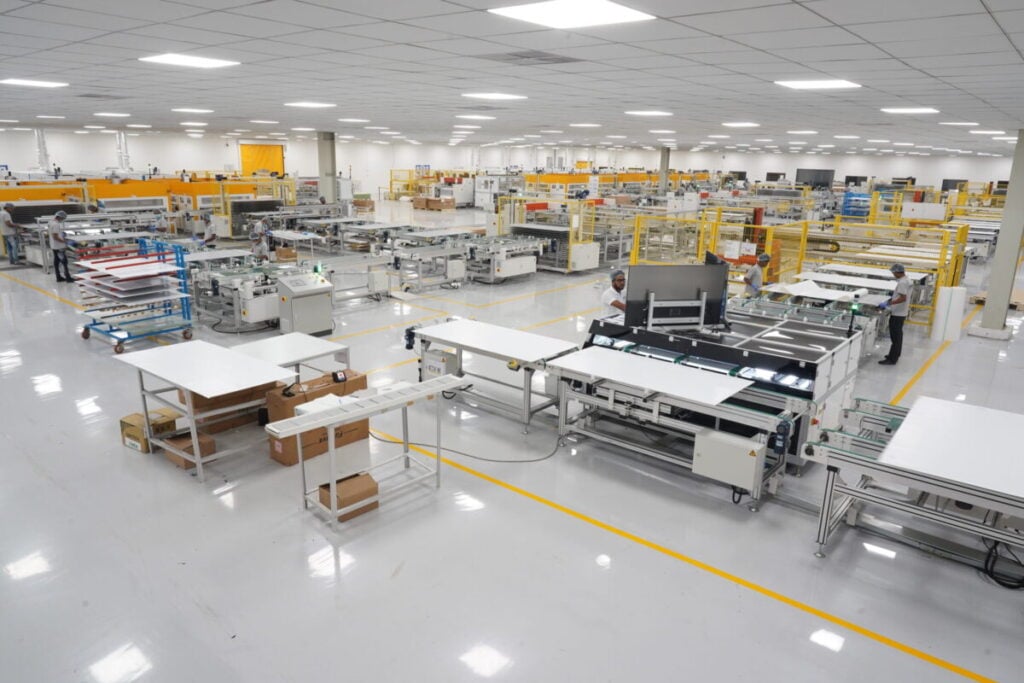
India cell and module manufacturer Waaree Energies has commissioned a 5.4GW cell manufacturing facility in Gujarat, the largest cell manufacturing facility in India.
Waaree has commissioned the Chikli facility in two phases, covering passivated emitter rear contact (PERC) and tunnel oxide passivated contact (TOPCon) technology. The company brought 1.4GW of mono-PERC capacity online in January of this year, and in February CEO Amit Paithankar noted that the remaining 4GW of capacity would cover TOPCon cells.
Unlock unlimited access for 12 whole months of distinctive global analysis
Photovoltaics International is now included.
- Regular insight and analysis of the industry’s biggest developments
- In-depth interviews with the industry’s leading figures
- Unlimited digital access to the PV Tech Power journal catalogue
- Unlimited digital access to the Photovoltaics International journal catalogue
- Access to more than 1,000 technical papers
- Discounts on Solar Media’s portfolio of events, in-person and virtual
Or continue reading this article for free
“We are not merely producing energy; we are generating a new narrative of national pride, where indigenous innovation becomes our most powerful export,” said Waaree chairman and managing director Hitesh Doshi, highlighting India’s recent push towards greater domestic manufacturing of solar products.
Figures from Mercom India show that India added 11.3GW of new module capacity, alongside 2GW of new cell capacity, in the first half of 2024, and cell capacity in particular is expected to increase exponentially in the coming years. As of June 2024, India had just 7.6GW of cell capacity in operation, but Mercom India expects this figure to reach 80GW by the end of next year, as India looks to reduce its reliance on products, particularly cells and wafers, produced in and exported from China.
Renewable energy minister Pralhad Joshi said that the facility “stands as a tribute to India’s growing prowess in the global renewable energy landscape” at a ceremony to mark the launch of operations at the Chikli facility. Joshi’s comments come weeks after his ministry specified that the use of imported wafers would disqualify cells otherwise made using domestically-produced components from being considered ‘domestically produced’ and eligible for subsidies under the Approved List of Module Manufacturers (ALMM).
US module expansion
The news also follows the commissioning of a 1.6GW solar module manufacturing facility in Texas in January. Much like in India, the US has seen a greater emphasis on domestic clean energy manufacturing in recent years, from the passage of the Inflation Reduction Act (IRA) under former president Joe Biden to escalating tariffs imposed on Chinese goods by current president Donald Trump.
Waaree has not specified whether it plans to use its new cells in US- or India-based module manufacturing, but the company commitment to new manufacturing capacity in two countries with significant emphasis on domestic production is notable. PV Tech has reached out to Waaree for comments.







